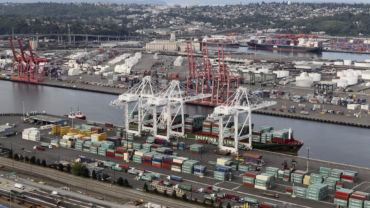This is the second part of a two-part series on the difficulties increasingly faced by global supply chain companies, from growing responsibility over ESG issues from buyers to climate change challenges from suppliers
In our previous installment, we discussed how environmental, social & governance (ESG) issues are becoming a major challenge that global supply chain (GSC) companies can no longer ignore. Be it from buyer and shareholder pressure or government mandate, GSC companies must increasingly face a battlefront on all sides. One ESG issue — the environment — in particular is becoming unavoidable, not because companies are trying to limit future damage but because they are reckoning now with the damage done in the past.
While climate change has spent the last few decades as “tomorrow’s problem”, it seems like tomorrow has arrived, especially for supply chains that are reliant on agricultural components. Agrarian commodities such as bananas and coffee have been under threat for years now, though not directly because of rising temperatures. Rather, these and other multi-billion-dollar crops are facing fungus strains that are devastating entire regions. While pathogens will always be a threat to agriculture (similarly to humans) these fungal strains are being enhanced by climate change, accelerating their spread.
Outside of exotic fungal pathogens, climate change is exacerbating threats as old as farming itself. A poor spring chili harvest caused by extended droughts in northern Mexico has led to a significant shortage of sriracha sauce and other related products. Simultaneously, the Great Salt Lake in Utah is becoming dangerously low, potentially resulting in catastrophic damage to the nearby agricultural industry which consumes three-quarters of its flow. Indeed, as human water consumption needs increase and temperatures climb, such water shortages will become a growing concern and will result in the expansion of ecological disruption of the GSC.
Further, tempering the risks of climate change to the supply side is not easy. Whereas a microchip factory could theoretically be built anywhere, large-scale agronomic farms are far more reliant on latitude, soil composition, water availability, and climate stability. While theoretically arable land is plentiful, ESG concerns may prevent companies from exploiting it (after all, such past expansions into rainforests and jungles has been a contributor to ongoing climate change). And as these products tend to come with a relatively short shelf life, different stages of the production cycle may have to be moved closer to the supply origination.
The altogether result is a giant headache for GSC companies looking to find resiliency or, as previously mentioned, excise from their chain those suppliers that harbor unacceptable ESG risks.
Exploring new solutions
There are, however, possible solutions. Genetic engineering, while entailing low approval levels on the consumer side as well as challenging intellectual property rights and ESG issues itself, could enable crops to better withstand changing climates and help push back against parasites and diseases.
A more expensive but potentially more beneficial option is vertical agriculture — effectively, large scale indoor growing operations stacked one on top of one another for extreme efficiency —which has so far failed to find its footing. However, with increasing interest, technological development, and a boom in demand for sustainable architecture, vertical agriculture could be moving towards a tipping point in the near future.
Of course, these are merely ways of changing how we growth the things which we already demand, but another alternative is changing the very products consumed. Meat production has proven to have a significant impact on the climate and tough climate-change control measures (as well as ESG pressure from consumers and regulators) may make alternatives to meat a larger share of the future market, especially in growing economies.
Alternate proteins that have similar tastes and textures to beef, pork, eggs, and more have the potential to become key diversification tools. Similar “lab-grown” products, while in the early stages of development, may prove even more useful, especially for an industry such as cosmetics, which is looking to distance itself from both animal and industrial byproducts
Like vertical agriculture, synthesized food products could also be re-established in geographic areas that have less ESG risk. This ability to move parts of the global supply chain which were previously locked in by geography is increasingly vital, even if the talk of “reshoring” that has become popular since the pandemic remains only a theoretical discussion.
Relocating the agricultural supply chain enables firms to sidestep many climate-change concerns previously mentioned. Deteriorating water sources can be exchanged for far more stable sources; disease spread can be curtained by isolating the growing environment from outside contamination; and agricultural goods from regions over which companies have little influence can be relocated to more favorable geography. As the agricultural supply chain is increasingly pressured by climate change, these benefits will only increase.
The ability to recognize possible solutions is very different from the ability to implement them. Rising interest rates make the immense amounts of capital needed even more difficult to secure for companies. Furthermore, the advanced skills GSC firms need are not easy to find among the current talent pool, and they also don’t come cheap. Finally, firms will need to adopt advanced technology and improve their ability to manage its implementation and use.
All of these challenges will have to be achieved in a time of growing regulatory complexity within a global economy that is fracturing further along geopolitical lines.
In the coming weeks, we will examine the best ways that GSC companies can address these problems and others as Thomson Reuters Institute releases the findings of its first Global Trade Survey







